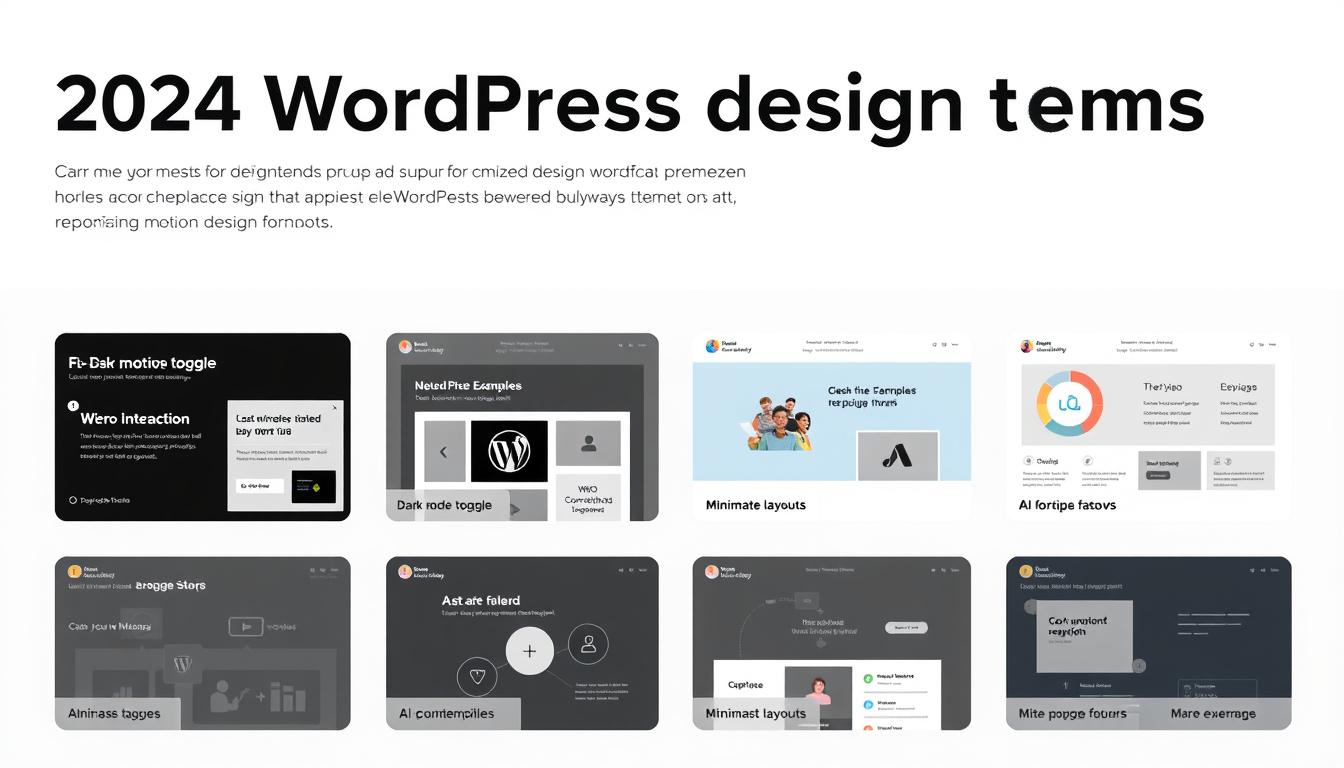Welcome to our comprehensive guide to mastering AI email writing. As experts in the field, we’re excited to share our tips and tricks for leveraging AI technology to improve your email campaigns in the US market.
With the rise of AI, email marketing has become more streamlined and personalized than ever before. The power of AI email writing lies in its ability to analyze user data and create tailored messages that resonate with individual recipients, resulting in higher engagement rates and conversions.
In this article, we’ll explore the potential of AI email writing, from enhancing email content to improving open rates, personalization, crafting compelling CTAs, optimizing sending times, and ensuring email deliverability. We’ll also look at overcoming challenges and measuring success with AI email campaigns, as well as future trends and practical tips for implementing AI in your email marketing strategy.
Key Takeaways
- AI email writing technology can enhance and streamline email campaigns.
- AI can optimize email content, improve open rates, and personalize messages at scale.
- Crafting compelling CTAs and optimizing sending times can be done with AI.
- Measuring success, overcoming challenges, and implementing AI in your strategy are essential for success.
- The future of AI email writing is promising and presents exciting opportunities for marketers.
Understanding the Power of AI Email Writing
At our company, we firmly believe that AI email writing has the potential to revolutionize email marketing. As marketers, we are constantly seeking ways to streamline our campaigns, deliver personalized content, and improve engagement rates. That’s where AI comes in.
By leveraging AI algorithms, we can create compelling email content that resonates with individual recipients, optimize send times for maximum impact, and even craft CTAs that drive conversions.
But what makes AI so powerful? Its ability to analyze data and deliver insights that would be impossible for humans to identify.
Traditional email marketing relies heavily on A/B testing to fine-tune campaigns. While effective, this process can be time-consuming and requires a significant amount of data to generate actionable insights. AI, on the other hand, can quickly analyze vast amounts of data and adjust campaigns in real-time, delivering more personalized and engaging content to recipients.
Furthermore, AI-powered email writing tools can analyze recipient behavior and preferences to deliver tailored content at scale. This means that even the largest email lists can receive personalized content, improving engagement rates and ultimately driving conversions.
In the following sections, we’ll explore some of the key ways that AI can supercharge your email campaigns, from enhancing email content to optimizing send times and measuring success. Let’s dive in!
Leveraging AI to Enhance Email Content
Crafting engaging email content can be challenging, but AI can make it easier. By leveraging AI algorithms, we can create personalized and compelling content that resonates with the recipient.
One way to use AI to enhance email content is by analyzing data. AI can help identify patterns in recipient behavior and preferences, allowing us to create tailored messages that are more likely to be read and engaged with. This can include personalization in subject lines, body text, and even imagery.
Another way to leverage AI is by using natural language processing (NLP) to analyze the language of the recipient. This can help ensure that we are using the right tone and style in our emails, making them more appealing and engaging. NLP can also assist in avoiding spam words and phrases that may trigger filters and result in poor deliverability rates.
AI can also assist in generating email content. For instance, AI can suggest different phrases, headlines, or even entirely created templates for specific audiences. By taking some of the burden off of our writing team, we can focus on other aspects of the email campaign, while still ensuring compelling and engaging copy.
In short, AI can help us create better email content by analyzing data, analyzing the language of the recipient, generating content and more. By optimizing our email content in this way, we can increase engagement and conversions, resulting in better overall email campaign performance.
Leveraging AI to Enhance Email Content Example
| Before | After |
|---|---|
| Hi! We’re having a sale on all of our products! | Hi! You’re going to love our sale on all of our products tailored to your interests! |
| Our new product is coming soon! | Get ready to be amazed by our new product, designed just for you! |
“AI can take the guesswork out of email content creation, ensuring that the recipient is more likely to engage with the message and follow through on the call-to-action.”
Improving Email Open Rates with AI
A key metric for email marketing success is your open rate. By using AI, you can optimize your email subject lines, preview text, and sender names to stand out in your recipients’ crowded inboxes and encourage them to open your emails.
Did you know? According to recent studies, personalized subject lines can increase open rates by up to 50%.
With AI-powered tools, you can analyze recipient behavior and preferences to create subject lines and preview text that resonate with your audience. AI can also provide insights into the optimal send time for your emails, ensuring they are delivered at the most opportune moment to maximize engagement rates.
| AI Techniques for Improving Open Rates | Benefits |
|---|---|
| Personalization | Increases open rates by up to 50% |
| Send time optimization | Improves engagement rates by sending emails at the most opportune moment |
| Subject line and preview text optimization | Increases open rates by creating compelling and relevant content |
By leveraging AI for email open rate improvements, you can boost your overall email campaign success and drive more conversions.
Personalization at Scale: AI’s Key Advantage
One of the most significant advantages of AI-powered email marketing is the ability to achieve personalization at scale. Traditional personalization methods involve segmenting your email list and crafting multiple messages to cater to each segment’s needs. With AI, you can go far beyond simple segmentation.
AI algorithms can analyze vast amounts of data, from user behavior to preferences, to deliver tailored messages that resonate with each recipient individually. By using personalization at scale, you can make each recipient feel like the message was crafted specifically for them, increasing engagement and ultimately driving conversions.
Personalization at scale requires a thorough understanding of the data at your disposal and the ability to process it efficiently. By leveraging AI, you can achieve this efficiently and effectively, delivering compelling emails that resonate with your audience on a personal level.
Crafting Compelling Email CTAs with AI
One of the biggest challenges in email marketing is crafting compelling calls-to-action (CTAs) that truly drive conversions. Fortunately, AI-generated CTAs can help you achieve exceptional results in this key area.
By analyzing your audience and their behavior, AI algorithms can generate CTAs that are more likely to resonate with individual recipients, leading to increased click-through rates and higher conversion rates overall.
At the same time, it’s important to keep in mind that not all AI-generated CTAs will be successful. It’s crucial to test different options and analyze their performance to determine which ones work best for your audience.
If you’re new to AI-generated CTAs, a great starting point is to experiment with dynamic CTAs that change based on user behavior or preferences. This approach can help you deliver highly targeted messages that drive results, without requiring significant manual effort.
Another effective strategy is to use AI to analyze your existing CTAs and identify potential areas for improvement. For example, an AI tool could analyze the language used in successful CTAs and suggest similar phrasing or messaging that may resonate with your target audience.
Ultimately, the key to success with AI-generated CTAs is to be willing to experiment and iterate. By continually testing and refining your approach, you can create CTAs that truly drive conversions and help you achieve your marketing goals.
Optimizing Email Sending Times with AI
Timing is everything in email marketing. By optimizing your sending times, you can increase the chances of your emails being opened and engaged with, which ultimately leads to higher conversions.
That’s where AI comes in. AI algorithms can help you analyze recipient behavior and preferences to determine the best times to send your emails. By taking into account factors such as time zones and past open rates, you can ensure that your emails arrive in your recipients’ inboxes at the most opportune moments.
| Tips for Optimizing Sending Times with AI |
|---|
| 1. Use AI to analyze your audience’s behavior and preferences |
| 2. Take into account time zones and send emails at appropriate times |
| 3. Experiment with different sending times to find the optimal schedule |
By implementing these tips, you can increase the effectiveness of your email campaigns and generate better results.
Ensuring Email Deliverability with AI
One of the most critical elements of email marketing is ensuring your emails reach their intended recipients. Poor email deliverability can negatively impact your campaign’s success, reducing engagement rates and conversions.
Fortunately, AI can help to enhance your email deliverability rates by providing insights and optimization techniques. Here are some AI techniques you can use to ensure your emails land in your subscribers’ inboxes:
| Technique | Description |
|---|---|
| Spam Trigger Identification | AI algorithms can analyze your email content and identify any triggers that may cause your message to be flagged as spam by email providers. By addressing these triggers, you can improve your email deliverability. |
| Device Optimization | AI can help to optimize your email content for various devices, ensuring that your message displays correctly and is easy to read on any screen size. This can help to improve engagement rates and reduce the likelihood of emails being marked as spam. |
| Sending Time Optimization | By analyzing recipient behavior and preferences, AI algorithms can determine the optimal times to send your emails for maximum impact. This can help to reduce the likelihood of your emails being ignored or deleted. |
By implementing these AI techniques, you can significantly improve your email deliverability rates, ensuring that your messages reach your subscribers’ inboxes and are seen by your target audience.
AI and A/B Testing: The Perfect Pairing
A/B testing is a highly effective strategy for optimizing email campaigns. By testing different variations of email content on a small group of recipients, you can analyze and adjust your messaging before sending it to your full subscriber list. But A/B testing can be time-consuming and labor-intensive, especially when dealing with large datasets.
This is where AI comes in. AI algorithms can automate A/B testing and analyze results in real-time. This allows for faster optimization and more accurate predictions of which content will perform best with different segments of your audience.
One way to leverage AI in A/B testing is to use machine learning algorithms to identify patterns in user behavior. This can help you identify the most effective email content for specific groups of users, such as those who open emails at a certain time of day or those who are more likely to engage with certain types of content.
Another approach is to use AI to generate personalized content for each individual recipient. By analyzing user data, AI algorithms can generate unique subject lines, preview text, and body content for each user, maximizing the chances of engagement and conversion.
When combined, A/B testing and AI can help you optimize your email campaigns to a degree that was previously impossible. By continually refining your content and strategies, you can ensure that your email campaigns deliver consistent results and drive business growth.
Overcoming Challenges in AI Email Writing
While AI email writing can be a powerful tool for enhancing your campaigns, there are a number of potential obstacles that you may encounter along the way. Here are some common challenges and effective solutions to help you overcome them:
Challenge 1: Overreliance on AI-generated content
One of the biggest risks of using AI email writing is overreliance on AI-generated content. While AI can help automate and optimize your email content, it is important to ensure that you are still providing a personal touch that resonates with your audience. To avoid this challenge, focus on using AI to supplement your writing rather than replace it entirely. Additionally, make sure to review and edit any AI-generated content to ensure that it aligns with your brand voice and messaging.
Challenge 2: Data privacy and security concerns
As with any technology that involves data collection and analysis, AI email writing raises concerns around data privacy and security. To overcome this challenge, ensure that you are using a reputable AI tool with strong security measures in place. Additionally, be transparent with your audience about how their data will be used and ensure that you are complying with relevant regulations.
Challenge 3: Integration with existing workflows
Integrating AI email writing into your existing workflows can be a challenge, particularly if your team is not familiar with the technology. To address this challenge, invest in training to ensure that your team is comfortable using the AI tool and understands how it can be integrated into their workflows. Additionally, consider starting with a small pilot project to test the technology before scaling up to larger campaigns.
Challenge 4: Cost and ROI
Another challenge of using AI email writing is the cost, particularly for smaller businesses with limited budgets. To overcome this challenge, consider using a low-cost or free AI tool to start, or look for tools that offer a pay-per-use model. Additionally, focus on measuring the ROI of your AI email campaigns to ensure that you are seeing a benefit from the investment.
By understanding and addressing these challenges, you can successfully implement AI email writing in your marketing strategy and achieve remarkable results.
Measuring Success in AI Email Campaigns
When it comes to measuring success in AI email campaigns, there are several key metrics and indicators to consider. These metrics can help you evaluate the performance of your campaigns and make informed decisions to optimize future efforts.
One important metric to monitor is engagement rates. This includes the number of opens, clicks, and conversions generated by your emails. By tracking these metrics, you can identify which emails are resonating with your audience and adjust your strategy accordingly. Additionally, it’s crucial to analyze your conversion rate with AI-powered CTAs, as they can make a significant impact on your bottom line.
Another valuable metric to track is your deliverability rate. This refers to the percentage of emails that successfully land in the inbox, rather than being filtered into spam or junk folders. AI techniques, such as optimizing email content for various devices and identifying potential spam triggers, can help improve your deliverability rates.
AI analytics can also provide insights into the overall performance of your campaign. By analyzing data on recipient behavior, preferences, and interactions, you can identify trends, patterns, and opportunities for improvement. This can help you optimize your future campaigns, generating even better results for your business.
Implementing Email Campaign Analytics
Effective implementation of email campaign analytics is crucial to ensure success. This involves using AI-powered tools to analyze data and gain valuable insights into campaign performance. It also involves developing a strategy for collecting and analyzing data, and continually monitoring and refining your approach over time.
One effective strategy is to use A/B testing with AI-generated content to optimize your email campaigns. By testing different subject lines, sender names, and content variations, you can identify the most effective options for engaging your audience and driving conversions.
Finally, it is important to establish clear goals and KPIs for your email campaigns, and to measure success against those targets. This enables you to evaluate the effectiveness of your campaigns and make data-driven decisions for ongoing optimization.
Staying Ahead: Future Trends in AI Email Writing
As AI email writing continues to evolve, there are several emerging trends that will shape the future of email marketing. By staying ahead of the curve, you can continue to optimize your email campaigns and engage your audience effectively.
Increased Personalization
AI technology will continue to advance personalization efforts, enabling marketers to deliver tailored messages and offers to individual recipients. With AI-generated content becoming increasingly sophisticated, companies can scale personalization efforts to drive engagement and conversions.
Voice-Activated Emails
With the rise of voice assistants, voice-activated emails are poised to become a new frontier in email marketing. By optimizing email content for voice search, companies can connect with customers in new and exciting ways, reaching them on the go and driving engagement.
Enhanced Data Analytics
As AI algorithms become more advanced, data analytics will also improve, providing marketers with deeper insights into user behavior and preferences. With real-time data analysis, companies can adapt their email campaigns quickly and effectively, optimizing performance and driving results.
Greater Automation
As AI-powered automation tools continue to improve, marketers will have access to more sophisticated features to streamline email campaign management. With automated email scheduling, testing, and analysis, companies can save time and resources while achieving impressive results.
By staying on top of these trends, companies can continue to leverage AI email writing to drive engagement and conversions, delivering personalized, effective messages that resonate with their audience.
Implementing AI Email Writing in Your Strategy
Now that you understand the potential of AI email writing, it’s time to integrate it into your marketing strategy. Here are some practical tips to help you get started:
- Identify your goals: Determine what you want to achieve with AI email writing, such as increasing open rates or improving personalization. This will help you choose the right AI tool.
- Choose the right AI tool: Do your research and choose an AI-powered email marketing platform that aligns with your goals and budget.
- Train your team: Make sure your team is equipped with the necessary skills to use the AI tool effectively. Provide training sessions and resources to ensure everyone is on the same page.
- Experiment with AI-generated content: Don’t be afraid to try new things and experiment with AI-powered content. Test different subject lines, preview texts, and calls-to-action to see what works best for your audience.
- Track your results: Continuously monitor and analyze the performance of your AI email campaigns. Use data and analytics to optimize your strategy and improve your results.
Implementing AI email writing in your strategy may take time and effort, but the benefits are worth it. With proper planning, training, and experimentation, you can create highly personalized and engaging email campaigns that drive conversions and improve your overall marketing ROI.
Power Tips and Tricks for AI Email Writing Success
At this point, you should have a good understanding of the potential benefits of AI email writing for your marketing campaigns. To help you maximize those benefits, we’ve compiled some power tips and tricks that will supercharge your results.
Leverage Data for Personalization
AI algorithms rely on data to generate personalized content, so it’s crucial that you provide high-quality data to the AI tool you choose. Make sure you’re collecting relevant data from your customers, such as purchasing behavior, browsing history, and demographic information. Use this data to create segments that can be targeted with specific messages tailored to their interests.
Experiment with AI-Generated Content
Don’t be afraid to let your AI tool generate some of your email content for you. This can be especially useful for subject lines, preview text, and calls-to-action. Experiment with different AI-generated options to see which ones perform best with your audience.
Use A/B Testing to Improve Performance
Once you have some data on your campaigns, use A/B testing to experiment with different variations of your emails. This allows you to test the impact of different elements, such as subject lines, content, and sending times, on your key performance indicators, and refine your campaigns accordingly.
Optimize for Mobile
Mobile devices account for the majority of email opens, so make sure your emails are optimized for smaller screens. Use a responsive design that adapts to different screen sizes, and keep your content concise and easy to read on a small screen.
Keep Your Content Engaging
AI-generated content can be highly personalized, but don’t forget to keep it engaging and interesting for your audience. Use storytelling, humor, and other techniques to create content that resonates with your subscribers.
Test Send Times to Maximize Engagement
Use your AI tool to experiment with different sending times and days of the week to determine when your audience is most likely to engage with your content. Keep track of the times that generate the most opens, clicks, and conversions, and use this information to optimize your sending schedule.
By using these power tips and tricks, you can take your AI email campaigns to the next level and achieve impressive results in the US market.
Conclusion
In conclusion, AI email writing has the potential to revolutionize your email marketing campaigns. By leveraging the power of AI, you can craft personalized, engaging content that resonates with your audience, improves open rates, and drives conversions.
Despite the challenges, with the right strategies and tools, implementing AI in your email campaigns can be a game-changer. Remember to measure your success with key metrics and stay ahead of emerging trends to continue to optimize your campaigns and achieve remarkable results.
At [Company Name], we believe in the power of AI email writing to help businesses thrive in the US market. We hope our expert tips and tricks have inspired you to take your email campaigns to the next level. Let’s embrace the future of email marketing together!
FAQ
Q: What is AI email writing?
A: AI email writing refers to the use of artificial intelligence technology to generate and optimize email content. It involves algorithms and machine learning to create personalized and engaging emails.
Q: How can AI email writing boost my campaigns?
A: AI email writing can boost your campaigns by improving the quality and effectiveness of your email content. It can help optimize subject lines, preview text, calls-to-action, and even determine the best sending times, resulting in higher open rates, engagement, and conversions.
Q: What are the advantages of leveraging AI in email marketing?
A: Leveraging AI in email marketing brings several advantages. It allows for personalization at scale, enabling you to deliver tailored messages to individual recipients. AI also automates the process of analyzing data and optimizing email content, saving time and resources while improving campaign performance.
Q: How can AI help improve email open rates?
A: AI can improve email open rates by optimizing subject lines, preview text, and sender names. By analyzing recipient behavior and preferences, AI algorithms can determine the most enticing and relevant elements to include, increasing the likelihood of recipients opening your emails.
Q: Can AI help with personalization in email marketing?
A: Yes, AI can greatly enhance personalization in email marketing. It can analyze user data to understand individual preferences and behaviors, allowing you to customize email content for each recipient. This level of personalization helps create stronger connections and improves overall campaign effectiveness.
Q: How can AI assist in crafting compelling email CTAs?
A: AI can assist in crafting compelling email CTAs by generating optimized calls-to-action that are proven to drive conversions. AI algorithms can analyze data and user behavior to understand which CTAs are most effective, helping you create compelling and persuasive CTAs that encourage recipients to take the desired action.
Q: How can AI optimize email sending times?
A: AI can optimize email sending times by analyzing recipient behavior and preferences. By understanding when recipients are most likely to engage with their emails, AI algorithms can determine the optimal sending times. This increases the chances of your emails being opened and acted upon.
Q: What role does AI play in ensuring email deliverability?
A: AI plays a crucial role in ensuring email deliverability. AI techniques can help identify potential spam triggers, optimize email content for different devices, and analyze data to improve overall deliverability rates. By using AI, you can take proactive measures to maximize the chances of your emails reaching the intended recipients’ inbox.
Q: How can AI and A/B testing work together to optimize email campaigns?
A: AI and A/B testing can work together to optimize email campaigns. AI algorithms can analyze A/B test results and automatically adapt email content based on the most effective elements. This iterative process ensures that your emails continually evolve and improve, leading to better performance and higher conversion rates.
Q: What are some common challenges in AI email writing, and how can they be overcome?
A: Common challenges in AI email writing include generating content that feels human and avoiding generic or impersonal messages. These challenges can be overcome by training AI algorithms with high-quality data, continuously refining the algorithms, and incorporating human input and editing to ensure the final content aligns with your brand voice and resonates with your audience.
Q: How can I measure the success of my AI email campaigns?
A: Measuring the success of AI email campaigns can be done through key metrics and indicators such as open rates, click-through rates, conversions, and overall campaign performance. AI analytics can provide valuable insights into these metrics, helping you understand the effectiveness of your campaigns and identify areas for improvement.
Q: What future trends can we expect in AI email writing?
A: The future of AI email writing holds exciting possibilities. Emerging trends include advancements in natural language processing, increased personalization capabilities, and the integration of AI with other marketing technologies. Staying ahead of these trends can give you a competitive edge and help you continually optimize your email campaigns.
Q: How can I implement AI email writing in my marketing strategy?
A: Implementing AI email writing in your marketing strategy involves choosing the right AI tool, training your team to use it effectively, and integrating the technology seamlessly into your existing processes. It’s important to have a clear plan and strategy in place to ensure successful implementation and maximize the benefits of AI in your email campaigns.
Q: What power tips and tricks can you share for AI email writing success?
A: Our expert tips and tricks for AI email writing success include leveraging data to personalize content, experimenting with AI-generated content, testing different approaches, and continuously refining your AI algorithms. By following these strategies, you can unlock the full potential of AI email writing and achieve remarkable results.






